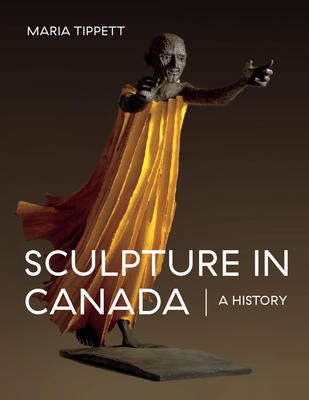Sculpture in Canada • A History
By Maria Tippett
224 pages • ISBN 978-1-77162-093-2
“It is a long story, beginning further back than I had myself imagined when I first began this project. If I conceive this history rather differently now, it is because I have learned such a lot along on the way. And the mission of this –the first large-scale history of sculpture in Canada- is to lay the foundation for… ongoing discussion and argument, about a field of aesthetic endeavour that has hitherto lacked proper appreciation.” – from the Introduction.
Found in public spaces and parks, art galleries and university buildings, along riverbanks as well as in city squares, private gardens and even underwater, Canadian sculpture encompasses a range of materials and styles from traditional bone and bronze to postmodern multimedia installations. As this book demonstrates, artistic intentions among the nation’s sculptors, whether political, social, theoretical or aesthetic, are as diverse as Canada itself.
The distinguished cultural historian Maria Tippett begins this richly illustrated study of Canadian sculpture in 13,000 BCE by examining a handcrafted shard found in the Bluefish Caves of the Yukon and proceeds to consider Inuit and First Nations sculptural practices alongside those of Euro-Canadians. Dr. Tippett begins with traditional forms such as totem poles and liturgical carvings before moving along to the landmark Expo 67 exhibition and other significant events, concluding with the postmodern artists who, with “a relentless striving for the new,” work within technological realms such as 30 modelling and virtual reality spaces.
Dr. Tippett’s survey evinces an avid interest in the logistics of sculpture, exploring the ways in which the medium demands more space, time, money and material to produce and exhibit than disciplines like drawing and painting. The result is that Canadian sculpture, more than in other artistic practices, complex social, economic and cultural forces have interacted with the pure inspiration of artists in their studios.
Sculpture in Canada is a groundbreaking work that will have a profound impact in introducing readers to the underappreciated wealth of this most public of Canadian arts.
Dr. Maria Tippett is the author of more than a dozen books on art and cultural history, including Emily Carr: A Biography, which won the Governor General’s Award for English-language non-fiction in 1979, and most recently Made in British Columbia: Eight Ways of Making Culture (Harbour Publishing, 2015), which was a finalist for the Hubert Evans Non-Fiction Prize. She has taught in BC at Simon Fraser University, the University of British Columbia and the Emily Carr University of Art and Design; in Ontario at York University; and in England at Cambridge University where she was Senion Research Fellow at Churchill College and member of the Faculty of History.
She lives on Pender Island, BC, with her husband, the historian Peter Clarke.

